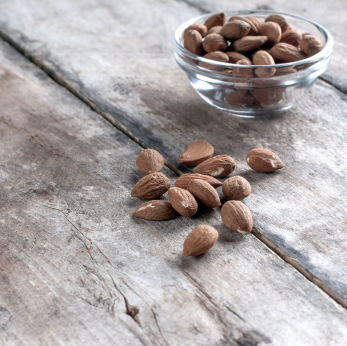Guyside: Don’t let winter weigh you down

There may not be a five-mile skating rink like Ottawa’s Rideau Canal in your town. But there are lots of opportunities for physical activity, even when the days are short and temperatures drop.
Where I live, this is the darkest time of the year. Instead of a beautiful sunrise when I wake up, it’s dark. When my partner is walking home from her office, it’s also dark. The layers of clothing get added to. The gloves and the puffy jackets come out of the basement. And the road bike gets brought inside and put on the trainer. Even though the winter solstice in December marks the is a welcome “bottom” to the year, before and after, the days are dark and short and cold.
When I was a kid, winter was the time for snow forts and snowmen and skating in the community rink while Anne Murray tunes scratched over the PA system.
Now, winter is the time of year where I have to shovel the driveway, wear heavy boots that I don’t like, and the time when I can’t ride (I know I could ride, but I’ve never been a winter cyclist type).
When it’s snowy and cold, It’s easy to find that hot new series to watch, to light a fire, pop some popcorn, and wait for spring. It’s just too tempting to simply hibernate in the house over the winter months. And it’s also a terrible idea when it comes to men’s health.
In Canada, studies show that people are nearly twice as likely to participate in any physical activity in summer compared to winter. And if you look at the sporting activities Canadians participate in, only two of the top 10 are winter sports. In Canada, it shouldn’t be surprising to anyone that ice hockey bumps up winter sports participation numbers, and even with the burgeoning popularity of women’s hockey it’s still predominantly male.
And the irony of all this is that when you exercise outdoes in the winter you burn up to 31% more calories than in warmer weather.
So, some tips for guys like me who don’t play hockey or ski for getting out there:
- “There’s no bad weather, just bad clothing” is an a age-old proverb. So if you’re going to invest, invest in good layers of clothing. Go to a store that specializes in outdoor gear for winter so that you can benefit from knowledgeable staff. Fitness magazine has some tips on how to dress for outdoor exercise.
- If you’re a beer-league hockey player, don’t just rely on the hockey to keep you fit. The start-stop nature of hockey can be dangerous for people who don’t have a good base of fitness.
- Some sports — hockey and skiing come to mind — can be pricey to participate in. But skates and snowshoes are cheaper than fully kitting out for playing hockey or going downhill, and walking (with appropriate footwear that will keep you stable) is the cheapest form of all. I live in Ottawa, where for several weeks each year the Rideau Canal turns into a free five-mile skating rink (your hot chocolate will cost you, though). Also, rent before you buy if you aren’t sure if you’re going to stick to a given activity.
- Find a buddy. There will be times when you can’t drag your own sorry butt out for that workout, which is when you need the nagging, cajoling, and potential bribery of a friend to get you going. Use that help, and offer it to your workout buddy.
- If you just can’t stand winter, then bring your sport indoors. My road bike is hooked up to a trainer, so I have the opportunity to ride inside. Other people go to spinning classes to benefit from the motivation of others suffering around them (N.B.: One discovery from spinning — all that sweat that evaporates when you’re riding the bike outside turns into a puddle beneath the bike when you spin. Be warned.)
- Even if you don’t hit the gym in summer, many will offer “winter membership” or monthly memberships.
If your tendency, like mine, is to go to ground when exercising is no longer just a matter of tossing on a t-shirt, shorts, and going, then you, like me, have to just work a little harder to not give in. Besides, drinking that cocoa will feel SO much better if you skated five miles to get it.
Read MorePondering the weighty subject of… weight.

Guyside columnist Bob LeDrew will never be mistaken for this person.
I know I don’t. But I do see a certain uptick in that “time spent thinking about diet” graph in recent years.
As an adolescent, I was blessed with a metabolism that burned everything I could shovel into my mouth and then some. And even through most of my adult life, I really haven’t thought about diet beyond “when is the next meal?”
But as I edge toward 50, I have started to make some changes. Why? First, I have seen that little band of blubber around my waist grow from a finger-width to what is probably 15-20 pounds of weight I don’t really need. Second, my encounter with bladder cancer in 2006 led to some increased concern about health in general. Third, it was always so simple when you could go out for beer and wings at will and never show any effect (my personal best: 80 wings with an unwise quantity of beer to wash ‘em down in an evening), but when you start to feel the hangover from booze as well as post-gluttonous digestive effects, it makes you think.
At least when it comes to body image, I think men and women are working from two separate objectives. It’s my belief that generally, women are more affected by pop-culture images of women than men. I don’t look at Hugh Jackman and think “I’m grotesque.” I think men are more tied to the body image of their younger selves, and that it takes some sort of breakthrough for a man to realize that his body isn’t the same at 47 as it was at 17, or 27.
And of course, it’s clear that we men have some real issues around body image — and body reality. Even if you think you’re fine, men in the United States have a real-life obesity problem. Check this out.

These guys show the “average” man from each of the US, Japan, the Netherlands, and France
I certainly am aware of this reality. And I would like to make some changes. I don’t need or want to turn into the aforementioned Mr. Jackman. So here’s an entirely arbitrary list of what I think is going on with my diet — what I am doing right, and what I am doing wrong at this point?
Good points:
- I don’t eat a lot of fried food
- My vegetable intake is good
- I eat fish at least once a week
Now the weak points:
- Too many canned soups for lunch (bad for the sodium count)
- My long-term love affair with all things chocolate needs to be pruned
- Not enough snacking action using “healthier things” like fruit or things that aren’t chocolate
- I like beer
I’m going to start doing two things. I’m going to track how many healthy snacks I eat and how much chocolate I consume. And every week, I’m going to update this table as a way of being accountable to you — and to me.
| Healthy Snacks | Chocolate | |
| Week of October 13 | 0 | 2 bars, 1 gelato |
Are you a snackaholic?
I don’t know about you when the stress levels accelerate or the weather starts to get nippy, I feel more inclined to snack. It appears that I am not alone; according to a study published online in the European Journal of Clinical Nutrition, 97% of adults report consuming at least one snack a day. Not only has snacking become common practice, but people snack more often and the snacks themselves are larger than ever. Supersize that snack! Yikes!
Fortunately, the next time a craving hits, there may be a better option than a bag of chips: almonds. In fact, Purdue University researchers report that eating 1.5 ounces daily of dry-roasted, lightly salted almonds may reduce hunger without affecting body weight.
I bet that you thought that nuts are fattening, right?
To test the almond theory, the researchers asked a group of 137 adults to:
- Avoid all nuts and seeds
- Consume 1.5 ounces of almonds daily with either breakfast or lunch
- Eat 1.5 ounces of almonds daily in between either breakfast or lunch (i.e. within two hours of the last meal and at least two hours before the next meal)
Other than the inclusion or exclusion of almonds at a defined time, all participants followed usual eating and physical activity patterns. They also met with a nurse weekly to record weight and dietary habits and discuss sensations of hunger , fullness or desire to eat. Additionally, at various benchmarks throughout the four weeks that the study took place, blood and blood sugar information were calculated.
Here’s the interesting part: despite an additional 250 calories a day from an almond snack, none of the adults participating in the study increased the total number of calories they consumed in a day or gained weight over the four week study. Additionally, eating almonds as a snack rather than part of a meal or avoiding them altogether appeared to significantly suppress hunger or the desire to snack. Another benefit gleaned from eating an almond snack was an improvement in overall vitamin E and monounsaturated fat profiles, which respectively, can help protect cells from damage and promote better absorption of nutrients from the foods that we eat, as well as improve heart health.
Mind you, conclusions can only be made with regard to the short term benefits of almonds. But in so far as snacking? Almonds may be the optimal snack, increasing a sense of fullness, decreasing caloric intake and counteracting the constant snacking desire, all without increasing overall weight. Craving a nibble? Reach for a handful of almonds.
Read More
Wednesday Bubble: Want to lose weight? Set better goals!
I can only imagine that you are rolling your eyes at the headline. But according to newly published research, how you set your weight loss goals may ultimately determine how successful or not you are at realizing them.
Let me break it down for you:
Menopause is challenging enough when it comes to weight gain and belly fat and the rest. However, are we setting ourselves up for failure when we tell ourselves that we want to lose “3 lbs?” Researchers from Florida State University and Washington University say a resounding “yes!”
They say that there is a distinction between making high-low range goals (I want to lose 2 to 4 pounds) and single number goals (I want to lose three pounds this week). This distinction makes an enormous difference, at least in terms of reengaging, i.e. doing something once and then doing it again — either by setting the same goal or setting. The high-low option actually offers an out, so to speak or as the researchers state “best of both worlds.” In other words, it’s a win-win whether or not you lose one pound or three pounds; both fall into the range that you set at the start. Conversely, a single number sets us up for ‘all or nothing’ or as I like to say, all or nothing in between. After all, isn’t is amazing when you set up to lose a pound and end up with a two pound bonus?!
To test out their hypothesis, the researchers 45 adult women around 45 years of age to establish a single number weight loss goal or high-low weight loss goal for a week over three weeks. During this time period, they attended one hour group sessions and learned about healthy lifestyle practices and weight loss was measured weekly. After three weeks, they had the option of reengaging for another 10 weeks. To avoid generalization of findings, the study was also repeated but this time, the goal had to do with overeating a regular sized bag of M&Ms and focused on achieving a target number.
So, how did the participants do?
In the weight loss study, more patients setting high-low goals reenrolled in the second portion than those setting single number goals. In the second study, the high-low goal left the participants with greater levels of accomplishment and a significantly greater interest in reengaging in goal setting again.
The key? Attainable and challenging.
Look, these numbers are small and not definitive. But it should make you stop and pause: is the way that you are setting your weight goals setting you up for success or failure? Interesting question, right?
Read MoreWednesday Bubble: Can probiotics keep you slim?
I’m not quite certain as to whether this story will ultimately become a bubble worth bursting but today, researchers believe that bacteria that make up the environment (i.e. the flora) of your gut may actually play a role in weight gain. This is based on previous studies in laboratory animals and humans that suggest that obesity is connected with a certain type of bacteria in the gut that is able boost the conversion of undigested carbohydrates into energy and favor weight and fat gain. On the flip side? Leaner animals don’t appear to have this bacteria.
Nutrition experts from the University of Copenhagen’s Faculty of Life Sciences believe that specific probiotics not only influence the flora of the gut, but also may trigger a feeling of fullness. They say that this could mean that a person would feel fuller sooner and as a result, eat less food. According to the University’s press release, which cites an analysis of 57 studies, even moderate obesity can slice life expectancy by as much as three years.
While they are not yet certain how probiotics can cause a person to feel fuller, they say that it may be linked to their ability to trigger hormones from the gut that induce this feeling.
It’s truly too early to make any predictions. However, do you recall the Dannon Activia commercials and weight loss claims? The company may have been slapped by the FTC for an inability to provide evidence but who knows, perhaps a link will be found (although not necessarily between weight maintenance and the specific probiotic in Activia).
Meanwhile, accumulating data suggest potential health benefits for probiotics e.g., protection against liver disease. Maybe they will eventually prove to be good for staying fit and optimizing your weight too.
Stay tuned!
Read MoreNewsflash! Lose the fat. Then break the fast!
I’m kicking this week off with a piece of provocative news: UK researchers are reporting that the best way to win the battle of the bulge and lose fat is to exercise on an empty stomach.
Mind you, the study (which appears in the online in the British Journal of Nutrition) is small. But, researchers say that by omitting breakfast before exercise, you might be more inclined to eat a more optimal balance of food throughout the day. In fact, when twelve physically active men participated in one of four scenarios — rest without breakfast, exercise without breakfast, breakfast followed by rest, or breakfast followed by exercise –that is actually what they found.
A bit of detail is in order here:
Men who exercised had a moderately intense run on a treadmill, during which time they expended approximately 700 calories. (Note that for the men assigned rest, an equivalent time was spent resting as on the treadmill). After exercising or resting, all the groups had a protein drink comprising approximately 444 calories. Ninety minutes later, they had lunch (pasta) and advised to eat as much as they wanted until they felt comfortably full. Then, the researchers measured energy and fat levels in the blood.
Interestingly, exercising in the morning (around 10 am) appeared to help balance out the day in terms of food and no attempts appeared to be made to compensate for the earlier activity in terms of caloric intake; appetite was also unaffected. But, here’s the critical piece: exercising in a fasted state appeared to increase the amount of fat burned by as much as 20%. And, while eating breakfast appeared to improve overall appetite throughout the day (helping to insure that it remained more balanced and did not lead to additional consumption), it tended to cancel out any appetite-suppressive benefits offered by exercise.
The bottom line is that by fasting before exercising, you may be able to accelerate fat loss. The question remains as to whether or not the same results can found in women and among larger numbers of individuals. And if these fat loss remains over time.
I’d love to hear from some RDs and fitness folks out there. What do you think?
Read More










